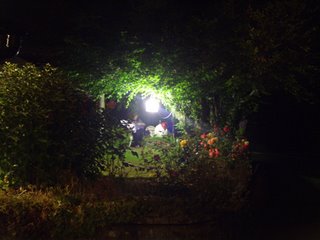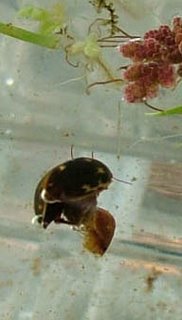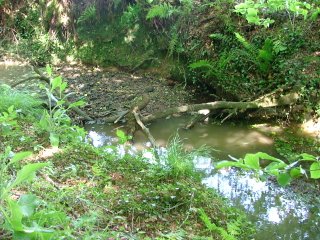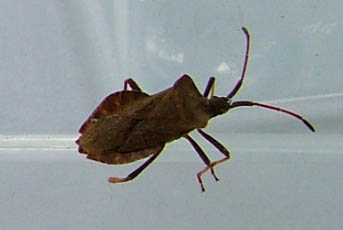 Several versions of the comparison between the alleged Sasquatch female in the Patterson-Gimlin film footage and an ordinary human male in a movie gorilla costume. The Man in a Suit has shorter arms and the fit of the suit is looser than Patty's pelt. The braincase is dramatically smaller in Patty's case, probably in Homo erectus brain size. The cranium of the human in the suit is a good deal larger.
Several versions of the comparison between the alleged Sasquatch female in the Patterson-Gimlin film footage and an ordinary human male in a movie gorilla costume. The Man in a Suit has shorter arms and the fit of the suit is looser than Patty's pelt. The braincase is dramatically smaller in Patty's case, probably in Homo erectus brain size. The cranium of the human in the suit is a good deal larger.
You can test this against as many test runs of a normal human in a gorilla costume or even a "Blobsquatch" image of a human in a gorilla costume. Homo sapiens has an expanded cranium like a light bulb up on top. And the Patterson female does not have nearly so large of a braincase.
 If it needs to be pointed out, a human's head inside a hooded mask of a gorilla costume is not going to have a proportionately smaller head inside the suit than he had before he put the mask on.
If it needs to be pointed out, a human's head inside a hooded mask of a gorilla costume is not going to have a proportionately smaller head inside the suit than he had before he put the mask on.


The last pasteup, Image 1 shows the direct comparison in proportionate sizes of the Patterson female (blow up of a still from the film footage, right) and the skulls of Homo erectus above and Homo sapiens below. I have excised the top of the head from the still and put it in the top center. This section begins at the top of the eye sockets, goes around the top and then cuts off at the back of the neck, level of where the ears would be. You cannot have a human skull in any alternate position when the face is fitted to the mask, human faces do not flex off the skulls. And this interpretation of the size of the face and head are in proportion to the body. Now you can have a suit with a fat padded belly trying to make the head look smaller by illusion, but that would not shrink the actual size of the face or cranium as a fraction of the total height, nor can it possibly change the way they fit together.
In my opinon, not only is the braincase INSIDE the peaked head deficient below the normal range of Homo sapiens, it is probably even deficient for an erectus, proportionately speaking. And the peak of the head cannot be any part of the head that has brains in it, in any event the braincase would be further down. And if it is supposed to be a peaked hood worn with a mask, then the peaked part most decidedly would not be any part of the head that would have any brains in it. The cranium MUST be lower down than the point on top.
This is not an argument that is original to me, Grover Krantz and other supporters of the film have been saying this all along.
 I defer to Krantz and submit that the creature depicted in the film footage is possibly a surviving Gigantopithecus.
I defer to Krantz and submit that the creature depicted in the film footage is possibly a surviving Gigantopithecus.
And that is based purely on anatomy alone: all other arguments alleging impropriety on patterson's part, or "suspicious circumstances" of any sort, actually have no further bearing on the case nor yet any relevance to the evaluation of the anatomy depicted in the film footage itself.






